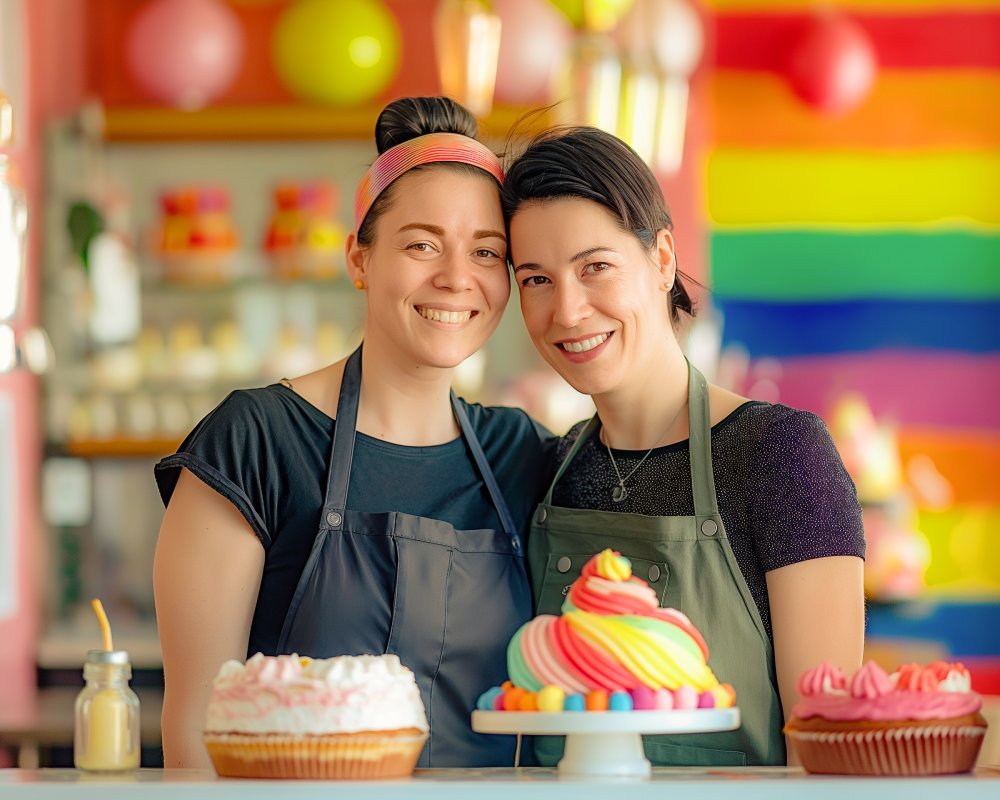
What Is The Difference Between Gay And Lesbian? A Comprehensive Exploration
In the rich and diverse spectrum of sexual orientations, the terms “gay” and “lesbian” are often used to describe same-sex attractions. However, understanding what is the difference between gay and lesbian involves more than just recognizing these basic definitions. This comprehensive blog aims to delve into the nuances, cultural contexts, and unique aspects of both identities, providing a clear and detailed exploration of what is the difference between gay and lesbian.
Defining the Terms: What Is The Difference Between Gay And Lesbian?
To understand what is the difference between gay and lesbian, it’s essential to start with clear definitions:
- Gay: Traditionally, the term “gay” refers to a man who is romantically and/or sexually attracted to other men. However, “gay” is also used as an umbrella term to describe anyone who experiences same-sex attraction, regardless of gender.
- Lesbian: The term “lesbian” specifically refers to a woman who is romantically and/or sexually attracted to other women. This term is exclusively used for women, distinguishing it from the broader term “gay.”
Historical Context: What Is The Difference Between Gay And Lesbian?
Understanding what is the difference between gay and lesbian also involves exploring the historical context and evolution of these terms.
Early Usage and Evolution
- Gay: Historically, the term “gay” was used in the 19th century to describe feelings of carefree or joyousness. By the mid-20th century, it evolved to refer specifically to homosexual men. Over time, “gay” became a widely accepted term to describe anyone who experiences same-sex attraction, although it is still predominantly associated with men.
- Lesbian: The term “lesbian” derives from the Greek island of Lesbos, home to the poet Sappho, who wrote extensively about love and desire between women. This association led to the adoption of “lesbian” as a term to describe women who love women.
Cultural Significance: What Is The Difference Between Gay And Lesbian?
When exploring what is the difference between gay and lesbian, it’s important to consider the cultural significance and unique aspects of each identity.
Gay Culture
- Representation: Gay men have been increasingly represented in media, literature, and arts, contributing to a broader cultural understanding and acceptance of gay identity. This visibility has helped shape public perceptions and promote acceptance.
- Community and Spaces: Gay men have historically created their own social spaces, such as bars, clubs, and community organizations, which have played a crucial role in fostering community and support.
Lesbian Culture
- Representation: While representation of lesbians has also grown, it has often lagged behind that of gay men. However, lesbian visibility in media and culture has increased significantly in recent years, highlighting diverse stories and experiences.
- Community and Spaces: Lesbians have also established their own social spaces and networks, including women-only events, bars, and advocacy groups, which have been essential in building community and solidarity.
Identity and Expression: What Is The Difference Between Gay And Lesbian?
Understanding what is the difference between gay and lesbian also involves examining the unique aspects of identity and expression within each group.
Gay Identity and Expression
- Diversity of Expression: Gay men may express their identities in a variety of ways, ranging from traditionally masculine to more feminine presentations. This diversity reflects the wide range of experiences and self-expressions within the gay community.
- Role of Stereotypes: Gay men often face stereotypes related to their mannerisms, interests, and behaviors. These stereotypes can be limiting and do not reflect the full diversity of gay men’s experiences.
Lesbian Identity and Expression
- Diversity of Expression: Lesbians also exhibit a wide range of gender expressions, from more masculine (butch) to more feminine (femme) presentations. This diversity is celebrated within the lesbian community as a reflection of individual identity.
- Role of Stereotypes: Lesbians may encounter stereotypes related to their appearance and relationships. These stereotypes can be restrictive and often fail to capture the complexity of lesbian identities.
Challenges and Misconceptions: What Is The Difference Between Gay And Lesbian?
When exploring what is the difference between gay and lesbian, it’s important to address the challenges and misconceptions that both groups may face.
Challenges Faced by Gay Men
- Discrimination and Homophobia: Gay men often face discrimination and homophobia, both from society at large and within their own communities. This can impact their mental health, relationships, and overall well-being.
- Stereotypes and Misconceptions: Gay men may encounter stereotypes that oversimplify their identities, such as assumptions about their interests, behaviors, or roles in relationships.
Challenges Faced by Lesbians
- Discrimination and Homophobia: Lesbians also face discrimination and homophobia, which can affect their mental health, relationships, and access to opportunities.
- Invisibility and Stereotypes: Lesbians may struggle with visibility, particularly in media and culture. They also face stereotypes that can limit understanding and acceptance of their identities.

Intersectionality: What Is The Difference Between Gay And Lesbian?
Understanding what is the difference between gay and lesbian also involves considering the role of intersectionality, which acknowledges how various aspects of identity intersect and impact experiences.
Intersectionality Among Gay Men
- Race and Ethnicity: Gay men of color may face additional challenges related to racism and discrimination within and outside the LGBTQ+ community.
- Disability and Age: Gay men with disabilities or older gay men may encounter unique barriers and experiences that intersect with their sexual orientation.
Intersectionality Among Lesbians
- Race and Ethnicity: Lesbians of color often navigate additional layers of discrimination and marginalization, both within and outside the LGBTQ+ community.
- Disability and Age: Lesbians with disabilities or older lesbians may face specific challenges that intersect with their sexual orientation and gender identity.
Advocacy and Activism: What Is The Difference Between Gay And Lesbian?
Both gay men and lesbians have been instrumental in advocating for LGBTQ+ rights and equality. Understanding what is the difference between gay and lesbian includes recognizing their contributions to activism and social change.
Gay Men in Activism
- Stonewall Riots: Gay men played a crucial role in the Stonewall Riots of 1969, a pivotal event in the LGBTQ+ rights movement.
- HIV/AIDS Advocacy: Gay men have been at the forefront of advocacy and activism related to HIV/AIDS awareness, research, and support.
Lesbians in Activism
- Women’s Rights Movement: Lesbians have been active in the women’s rights movement, advocating for gender equality and reproductive rights.
- LGBTQ+ Rights Movement: Lesbians have also played key roles in the broader LGBTQ+ rights movement, fighting for marriage equality, anti-discrimination laws, and more.
Conclusion: What Is The Difference Between Gay And Lesbian?
In conclusion, the question “what is the difference between gay and lesbian?” reveals both distinct and overlapping aspects of these identities. Gay men and lesbians each have unique experiences, cultural contributions, and challenges, yet they share a common bond in their pursuit of acceptance, equality, and self-expression.
By exploring what is the difference between gay and lesbian, we gain a deeper understanding of the rich diversity within the LGBTQ+ community. This exploration highlights the importance of recognizing and celebrating the unique experiences and contributions of both gay men and lesbians.
Final Thoughts: Embracing Diversity and Acceptance
The exploration of what is the difference between gay and lesbian reminds us of the importance of embracing diversity and promoting acceptance. By understanding and respecting the complexities of individuals’ identities and relationships, we can foster a more inclusive and compassionate society. Both gay men and lesbians’ lives and legacies serve as powerful reminders of the beauty and strength that come from being true to oneself and supporting others in their journey of self-discovery and expression.
The Role of Education and Awareness
To continue advancing understanding and acceptance of what is the difference between gay and lesbian, education and awareness are crucial. Schools, workplaces, and communities should foster environments that promote understanding and respect for all sexual orientations and gender identities, including gay men and lesbians.
Supporting LGBTQ+ Visibility and Rights
Supporting LGBTQ+ visibility and rights involves advocating for policies and practices that ensure equality and justice for all members of the LGBTQ+ community. This includes supporting anti-discrimination laws, promoting inclusive education, and celebrating the diverse cultures and achievements within the LGBTQ+ community.

The Future of LGBTQ+ Identity
As society continues to evolve, so too will the understanding and expression of LGBTQ+ identities. The future promises greater visibility, acceptance, and celebration of gay men, lesbians, and all members of the LGBTQ+ community. By continuing to explore and embrace the diverse experiences of gay men and lesbians, we move towards a more inclusive and understanding society for all.
Advertisement · Scroll to continue

More Recommended
What Are the Top Gay-Friendly Cities in the World?
What Are the Top Gay-Friendly Cities in the World? – Are you looking to explore [...]
Understanding the Challenges Faced by Gay Youth
Understanding the Challenges Faced by Gay Youth – Understanding the Challenges Faced by Gay Youth [...]
Stem Lesbian Meaning: What Is Stem Lesbian?
Stem Lesbian Meaning: What Is Stem Lesbian? – The term “Stem Lesbian” refers to lesbians [...]
Why Were LGBTQ+ Rights Pushed in the 1990s?
Why Were LGBTQ+ Rights Pushed in the 1990s? The 1990s marked a transformative decade for [...]
How Do Gays Handle Workplace Discrimination?
How Do Gays Handle Workplace Discrimination? – Navigating the professional landscape can be challenging for [...]
What Is Gay Rights?
A Comprehensive Guide to LGBTQ+ Equality – What Is Gay Rights? What is gay rights? [...]
What is Olivia Cruises?
What is Olivia Cruises? – Olivia Cruises, a well-known name in the world of LGBTQ+ [...]
Explaining the Difference Between Cross-Dressers and Transgenders
Explaining the Difference Between Cross-Dressers and Transgenders In today’s world, where conversations about gender identity [...]
Expanding Gay-Owned Businesses Beyond Niche Markets
Expanding Gay-Owned Businesses Beyond Niche Markets – In today’s ever-evolving marketplace, it’s important for businesses [...]